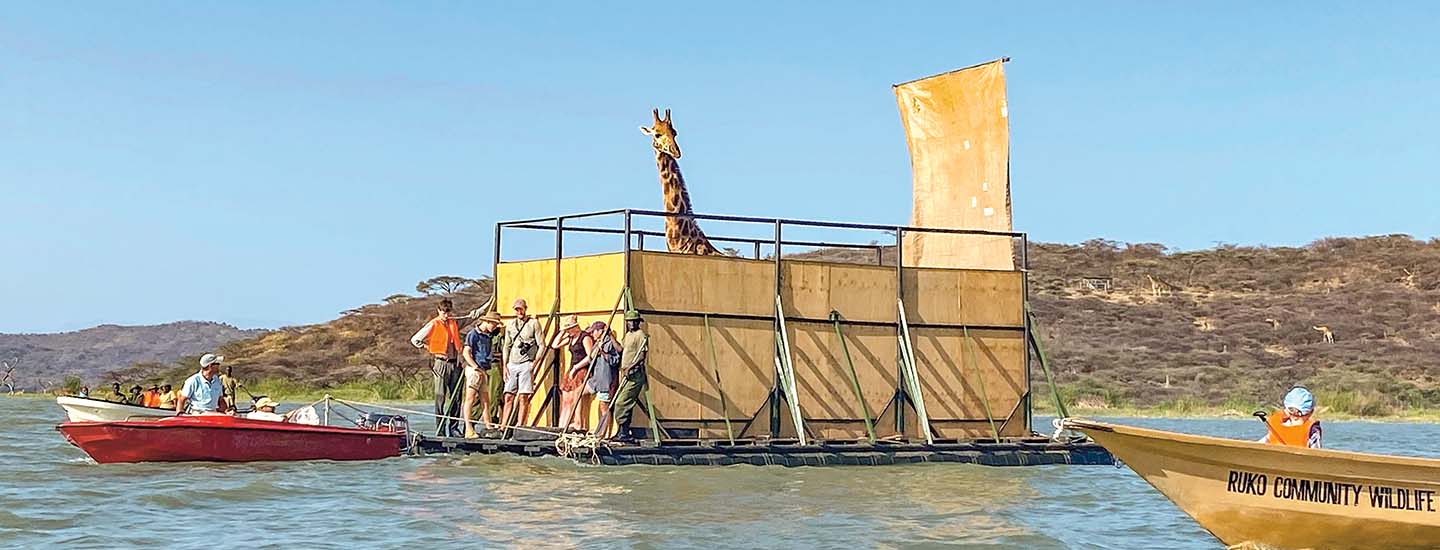How do you get the world’s tallest animal off an island? That’s the problem wildlife experts in the African nation of Kenya faced last fall. Months of heavy rain had left nine giraffes stranded on an island in Lake Baringo. Swimming to safety wasn’t an option. The lake is too wide for the giraffes to swim across, and hungry crocodiles lurk in its waters.
The animals—a type of Northern giraffe known as Rothschild’s giraffes—had been living on a peninsula that stretched into Lake Baringo. Conservationists had brought the animals there in 2011 to protect them from poachers who illegally hunt giraffes for their meat and spotted coats.
For years, the animals could safely roam from the peninsula to the mainland to find food. But starting in late 2019, heavy rains caused the lake to swell, turning the peninsula into an island and cutting the giraffes off from the mainland—and their food supply.

